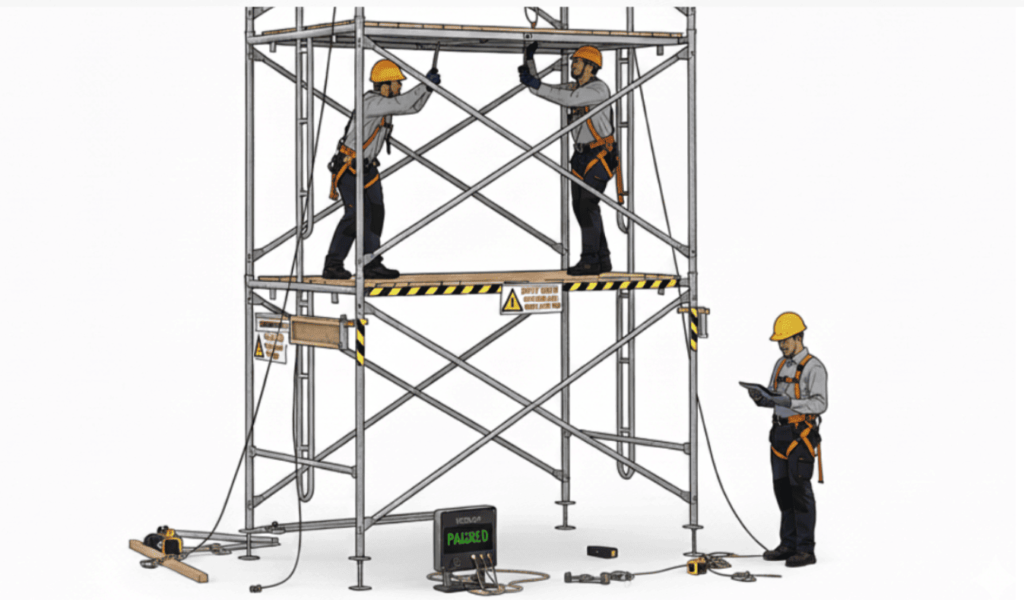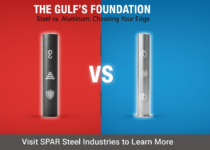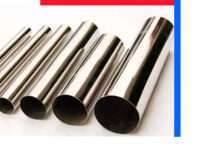Scaffolding Standards: The UAE-KSA Imperative.

Introduction to Scaffolding Standards
Scaffolding in construction and industrial maintenance is not just a temporary support system; rather, it is a critical safety structure that consequently must meet strict global and regional regulations. Contractors are required to comply with internationally recognized standards such as British BS/EN and American ANSI/OSHA, as well as owner-specific requirements, including Saudi Aramco General Instructions (GI 8.001) and ADNOC Codes of Practice, which, indeed, rank among the most demanding in the world.
Therefore, this guide provides a complete breakdown of scaffolding equipment, encompassing tubes, couplers, system scaffolds, and platform boards, and subsequently maps them against the standards that govern their use. To clarify, we have developed a comprehensive compliance submittal to clearly demonstrate precisely how products meet these codes, thereby ensuring contractors can deliver safe, efficient, and approved solutions for high-risk oil, gas, and construction projects.
Scaffolding Standards for Tubes: The Backbone of Every Structure.
Far from being simple conduits, scaffolding tubes must reconcile divergent global standards—from European cold-forming (EN) and American structural steel (ASTM) to the non-negotiable galvanizing and embossing protocols enforced by Aramco and ADNOC.
British/European Standards: Specifically, these include BS 1139-1-1, EN 39, and EN 10219.
American Standards: It also consists of ASTM A500 (structural tubing), ASTM A370 (testing), and ASTM A123 (galvanizing).
OSHA (1926 Subpart L): Furthermore, this regulation governs performance and safety.
Aramco specifies embossing (manufacturer, specification, year), post-galvanizing tests, and hot-dip galvanizing. Conversely, ADNOC requires compliance with BS 1139 and strict inspection regimes.
Scaffolding Standards for Couplers & Fittings: The Connective Strength.
Scaffolding couplers and fittings, though small, are the most highly stressed components in a scaffold, acting as the critical connection points that collectively determine the entire structure’s load-bearing capacity and stability.
British/European Scaffolding Standards: Specifically, these include BS 1139-2.1/-2.2 and EN 74. ANSI A10.8 / OSHA: Furthermore, these provide performance-based requirements.
Aramco in particular requires markings, requires Safe Working Load (SWL) verification, and specifies that girder couplers must be used in pairs.
ADNOC: Emphasizes maintenance, requires oiling of threads, and specifies that couplers must be replaced when worn
Scaffolding Standards for System Scaffolds: Cuplock & Ringlock.
System scaffolds like Cuplock and Ringlock achieve their speed and efficiency by replacing hundreds of loose fittings with integrated nodes and captive cups, shifting the focus from individual component checks to rigorous adherence to manufacturer load tables and specific tie patterns.
Cuplock: Standards with forged cups every 50 mm; manufacturer’s load tables govern.
Ringlock: Rosette node system, used in façades and complex works.
– Aramco: GI 8.001 + OSHA/ANSI standards.
– ADNOC: Weekly inspections, tagging, tie patterns.
Scaffolding Standards for Working Platforms.
The working platform is the single element of a scaffold that dictates the worker’s comfort, efficiency, and direct relationship to the work face, turning a vertical system into a horizontal workstation.
BS 2482: Governs timber boards.
OSHA: Timber must be Scaffold Grade.
LVL planks must be embossed with ‘PROOF TESTED’ and ‘OSHA’ indicates that all scaffolding lumber is required to have the strength and quality.
Fabricated steel planks must be four times stronger than the maximum intended load for safety (4x strength) and must not deflect more than the span length divided by 60 to ensure stiffness and stability
| Requirement | Specification | Explanation |
| Max Span (38 mm boards) | 1.5 m (4.9 ft) | 38 mm (1.5-inch) thick planks must be supported at least every 1.5 meters to prevent excessive deflection or failure under load. This span is common for high-grade, machine-graded planks. |
| Max Span (50 mm boards) | 2.4 m (7.9 ft) | 50 mm (2-inch) thick planks are stronger and are permitted a greater span of up to 2.4 meters between transoms or supports. |
| Embossing | Mandatory | Scaffold planks (especially Laminated Veneer Lumber – LVL) must have the words “Proof Tested Scaffold Plank” and “OSHA” (or an Aramco-accepted equivalent) embossed continuously along both edges. This permanent marking verifies the material is certified and tested to meet high strength and safety factors (typically a safety factor of 4). |
Global Use & Safety Rules
Scaffolds must support 4× the intended load
- Requirement: Each scaffold and all of its components must not only support their own weight but also carry, without failure, at least four times the maximum intended load applied or transmitted to them.
- Purpose: This 4:1 safety factor serves as a margin of error, and moreover, it accounts for unforeseen forces, shock loading, material inconsistencies, and the dynamic nature of a construction site.
- Maximum Intended Load (MIL): The MIL represents the total weight of all personnel, tools, equipment, and materials the scaffold is designed to hold at any one time. Furthermore, the actual load on the scaffold must never exceed either this calculated maximum intended load or the scaffold’s rated capacity, whichever is less.
- Suspension Scaffolds: In addition, for suspension scaffolds, the rigging (suspension ropes and connecting hardware) often carries an even higher safety factor, which is typically six times (6×) the maximum intended load.
Stability Ratio ≤4:1 (Height-to-Base Width Ratio)
- Requirement: For supported scaffolds (those resting on the ground or a structure), the height of the scaffold should generally be no more than four times its minimum base dimension (width). This is often expressed as a height-to-base width ratio of no more than 4:1 (Height/Base Width≤4).
- Stability Control: If a supported scaffold’s height-to-base ratio is more than 4:1, it becomes unstable and must be immediately restrained from tipping. This is achieved by guying, tying, or bracing the scaffold to a structurally sound part of the building or structure.
- Restraint Placement: These guys, ties, or braces must be installed according to the manufacturer’s recommendations or at specific vertical intervals: Every 20 feet (6.1 m) or less for scaffolds 3 feet (0.91 m) wide or less. Every 26 feet (7.9 m) or less for scaffolds wider than 3 feet.
Full planking between guardrails
- Requirement: The platform on all working levels of a scaffold must be fully planked or decked between the front uprights and the guardrail supports.
- Gaps: The space between adjacent platform units (planks, decks) must be no more than 1 inch (2.5 cm) wide. The space between the platform and the uprights (scaffold posts) must also be no more than 1 inch (2.5 cm). Its allowed when the employer can demonstrate that a wider space is necessary . In the exception case, the remaining open space between the platform and uprights cannot exceed 921 inches (24.1 cm).
- Width: Work platforms must generally be a minimum of 18 inches (46 cm) wide.
- Securing: Planks must be secured (cleated or restrained) to prevent movement or displacement.
Weekly inspection & tagging.
Inspection Authority and Role
A Competent Person must inspect scaffolds. This individual can identify existing and predictable hazards in the surroundings or working conditions and has the authority to immediately implement corrective measures to eliminate them.
Inspection Frequency:
- Before each work shift: A Competent Person checks for visible defects before each day’s use.
- After any event: A Competent Person inspects the scaffold after any occurrence that could affect its structural integrity, such as strong wind, a storm, or a heavy object striking it.
- Weekly: A Competent Person inspects the scaffold at intervals not exceeding seven days after the initial inspection, and again after any repairs, modifications, or re-assembly.
Tagging System:
While regulations mandate inspection and documentation, a formal tagging system provides a widely adopted and highly recommended industry best practice to clearly communicate the scaffold’s status to all workers. The Competent Person is responsible for signing and dating the tag.
- Green Tag: Safe for Use
- Yellow Tag: Caution/Modification Required
- Red Tag: Unsafe/Do Not Use
Compliance Matrix
| Component | BS/EN | ANSI/OSHA | Aramco | ADNOC |
| Steel Tubes | BS 1139, EN 39, EN 10219 | ASTM A500, ASTM A370, ASTM A123, OSHA 1926 | Embossing, galvanizing, testing | BS 1139 compliance & inspection |
| Couplers | BS 1139-2, EN 74 | ANSI A10.8, OSHA 1926 | Markings, SWL, pairs for girder couplers | Maintenance & free threads |
| Cuplock | EN/BS + Manufacturer Specs | OSHA 1926 + Manufacturer | GI 8.001 governs | Weekly inspection & tagging |
| Ringlock | EN 12811 / Manufacturer | OSHA 1926 + Manufacturer | Owner GI rules apply | ADNOC tie/guardrail requirements |
| Timber Boards | BS 2482 | OSHA + Scaffold Grade | Span/condition limits | 3 supports min, overhang rules |
| LVL Boards | Manufacturer (38×225 mm) | OSHA + embossing | Mandatory embossing & proof test | Span rules as timber |
| Steel Boards | EN/BS fabricated platform | OSHA fabricated platform | 4× strength, L/60 deflection | Close decking |
Conclusion
Compliance isn’t optional; rather, it forms the foundation of safe and efficient scaffolding operations. At SPAR Steel Industries, we guarantee safety and reliability by ensuring that we manufacture, emboss, and certify every tube, coupler, board, and system scaffold. Consequently, our products meet or exceed the requirements of BS, EN, ANSI, OSHA, Aramco, and ADNOC. Therefore, whether it’s Cuplock, Ringlock, steel boards, or our proprietary products, full compliance submittals back them, so clients can trust them.
Ultimately, we hope this guide brings together all the key international and regional standards in one place, thereby making it easier for contractors and project managers to reference.



